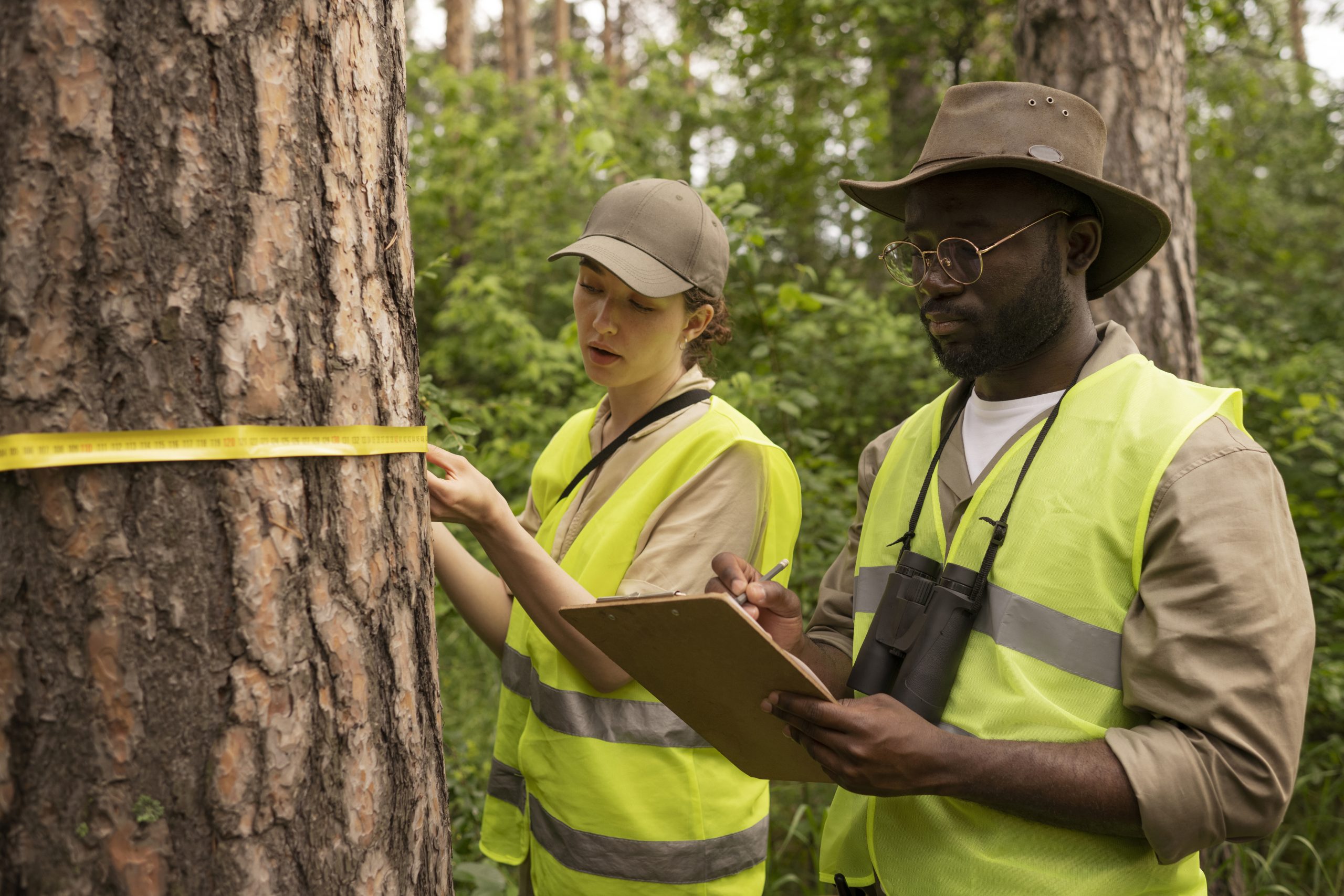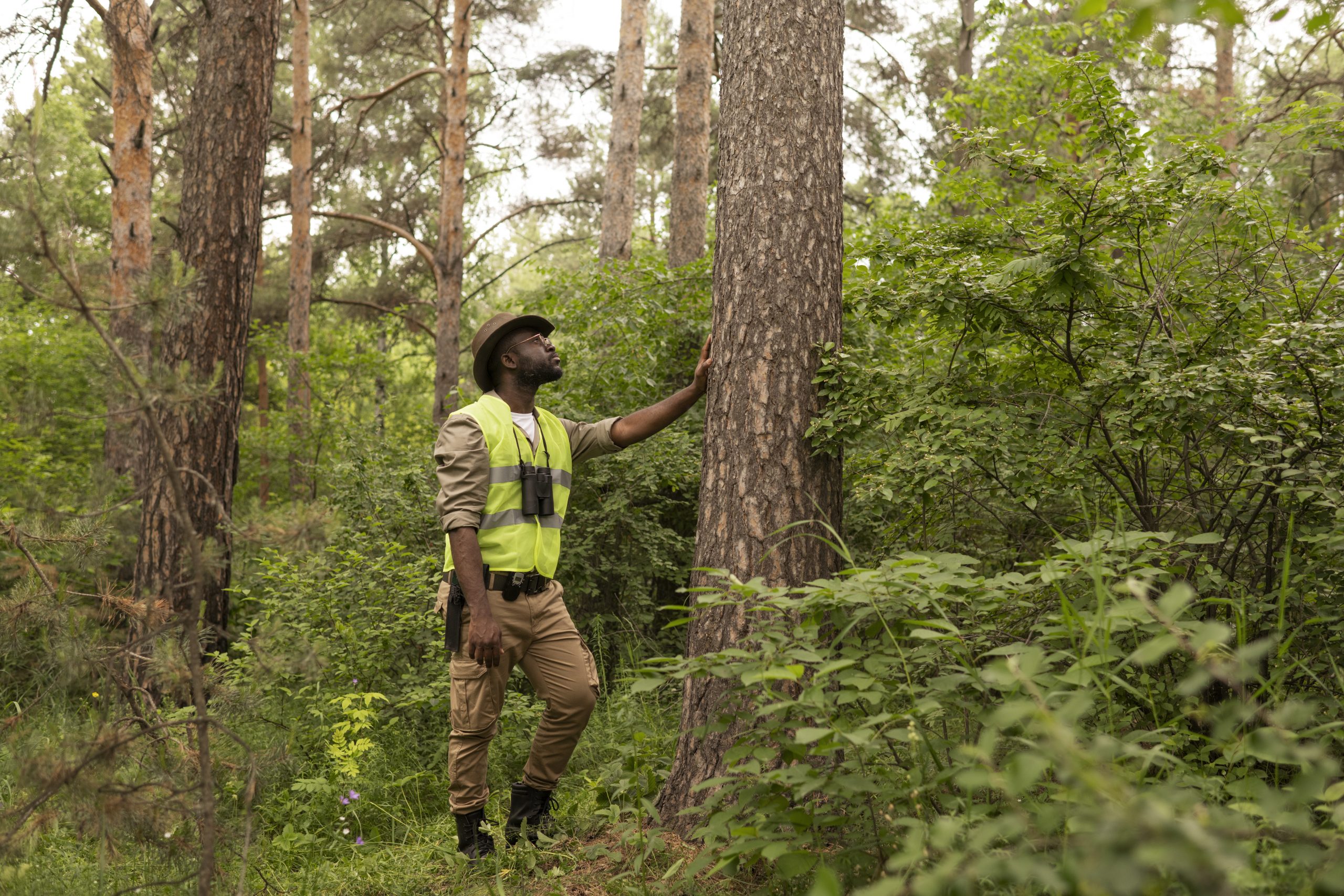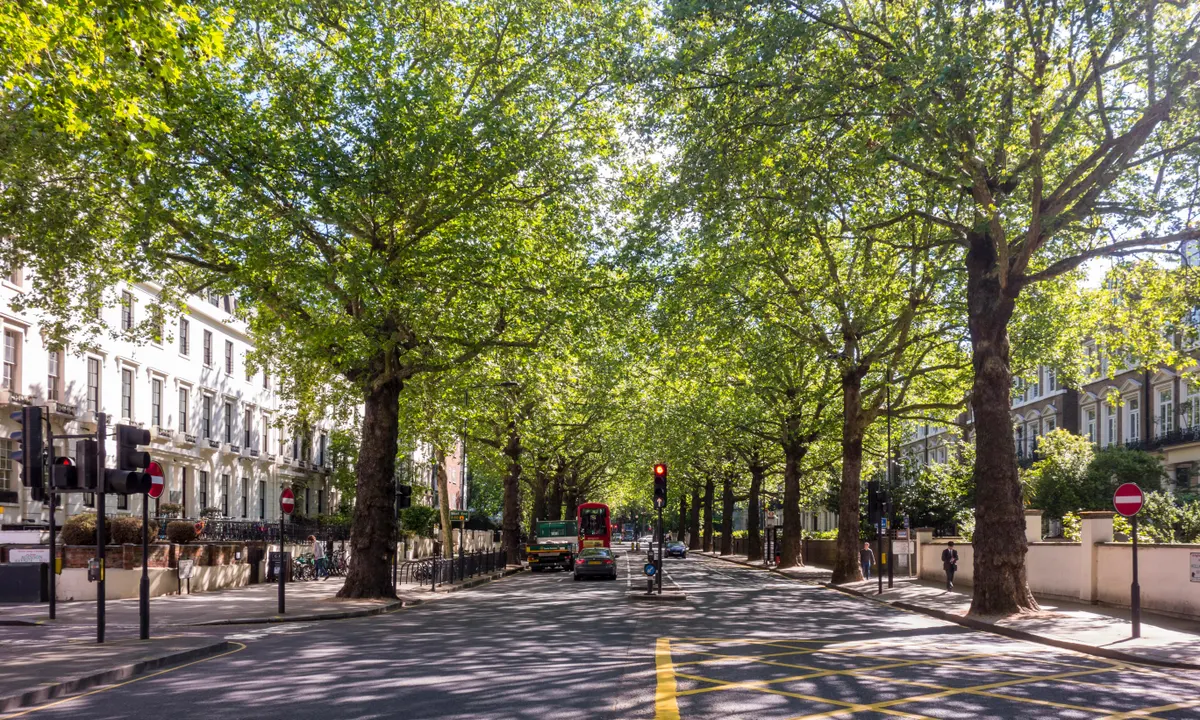THE BENEFITS OF YEARLY TREE INSPECTIONS
THE BENEFITS OF YEARLY TREE INSPECTIONS
Regular tree inspections are of paramount importance for maintaining the health, safety, and overall well-being of trees, property, and people. The benefits of conducting frequent tree assessments go beyond aesthetics and extend to environmental sustainability, property protection, and personal safety. Here’s why regular tree inspections are crucial:

- Early Detection of Issues: Regular inspections enable the identification of early signs of disease, decay, pest infestations, and structural weaknesses. Detecting problems in their early stages allows for timely intervention, preventing further deterioration and potential spread to other trees.
- Ensuring Structural Integrity: Inspections help identify weak branches, cracks, and other structural defects. By addressing these issues promptly, property owners can enhance the stability of trees and reduce the risk of branch or tree failure, which can lead to accidents or property damage.
- Mitigating Safety Hazards: Regular inspections ensure that trees located near structures, pathways, roads, or high-traffic areas are assessed for potential hazards. This proactive approach helps prevent accidents caused by falling branches or trees and promotes a safe environment for residents, visitors, and passersby.
- Preserving Aesthetics: Trees are integral to the visual appeal of a property. Regular inspections allow for the maintenance of healthy and attractive trees, contributing to the overall beauty and ambiance of the landscape.
- Protecting Property and Assets: Inspections assess the proximity of trees to structures, utility lines, vehicles, and valuable assets. By identifying potential risks, property owners can take preventive measures to avoid property damage and minimize the risk of liability.
- Ensuring Ecosystem Health: Trees are essential components of ecosystems, supporting biodiversity and environmental health. Regular inspections help prevent the spread of diseases or pests that could negatively impact other vegetation and disrupt the delicate balance of local ecosystems.
- Cost Savings: Detecting and addressing issues early on through regular inspections often leads to cost savings. Early interventions are generally less expensive than emergency tree removal or property repairs caused by neglecting tree care.
- Compliance with Regulations: Many municipalities have regulations or ordinances related to tree care and maintenance. Regular inspections ensure compliance with local requirements, helping property owners avoid fines and penalties.
- Documentation and Liability Protection: Maintaining detailed records of regular inspections and maintenance efforts provides evidence of responsible property management. In case of legal disputes or insurance claims, these records demonstrate due diligence and proactive care.
- Collaboration with Certified Arborists: Engaging certified arborists for inspections brings specialized expertise to tree assessment. Arborists can offer tailored recommendations, share insights about tree health, and provide guidance on appropriate care and maintenance practices.
- Long-Term Tree Health and Sustainability: Consistent monitoring through regular inspections helps address issues before they become severe. This proactive approach promotes the longevity and vitality of trees, contributing to a healthier and more sustainable environment.
In conclusion, the importance of regular tree inspections cannot be overstated. By investing in proactive care and early intervention, property owners can ensure the health, safety, and longevity of trees, contributing to the overall well-being of the environment and the people who interact with it.
Benefits that Come from Yearly Tree Assessments
Yearly tree assessments, also known as regular tree inspections, offer a wide range of benefits that contribute to the health, safety, and overall well-being of both trees and the surrounding environment. These assessments involve examining trees for signs of disease, structural issues, and potential hazards on an annual basis. Here are some of the key benefits that come from yearly tree assessments:

- Early Detection of Issues: Yearly tree assessments allow for the early detection of various issues, including diseases, pests, decay, and structural weaknesses. Catching these problems in their early stages enables timely intervention, preventing further deterioration and the potential spread of issues to other trees.
- Preventing Hazardous Situations: Regular assessments help identify hazardous conditions such as weak branches, leaning trees, or unstable trunks. By addressing these hazards promptly, property owners can prevent accidents, property damage, and injuries that could result from falling branches or trees.
- Enhancing Tree Health: Yearly assessments provide opportunities to monitor the health of trees and intervene when necessary. Pruning, disease treatments, and soil amendments can be implemented to promote tree vitality and longevity.
- Safety Assurance: Yearly assessments contribute to creating safer outdoor spaces for residents, visitors, and passersby. By identifying and addressing potential hazards, property owners can minimize the risk of accidents caused by tree-related issues.
- Preserving Property Value: Well-maintained trees enhance the aesthetic appeal and value of a property. Yearly assessments ensure that trees remain healthy, attractive, and structurally sound, contributing to the overall curb appeal of the landscape.
- Long-Term Cost Savings: Early intervention through yearly assessments can prevent the need for costly emergency tree removal, property repairs, or extensive treatments. Regular maintenance helps avoid more significant expenses down the road.
- Compliance with Regulations: Many municipalities have regulations or ordinances related to tree care. Yearly assessments ensure compliance with local requirements, helping property owners avoid fines and penalties.
- Environmental Sustainability: Healthy trees play a crucial role in maintaining ecosystem balance and biodiversity. Yearly assessments help prevent the spread of diseases, pests, or invasive species that could harm other vegetation.
- Liability Protection: Detailed documentation of yearly assessments and maintenance efforts provides evidence of responsible property management. In case of legal disputes or insurance claims, these records demonstrate due diligence and proactive care.
- Tailored Care: Certified arborists can provide specialized insights during yearly assessments. They can recommend appropriate care and maintenance practices tailored to the specific needs of each tree, ensuring optimal health and growth.
- Improved Tree Quality: Regular assessments lead to well-pruned, structurally sound trees with reduced risk of disease or pest infestations. This contributes to healthier foliage, better flowering, and overall improved tree quality.
- Peace of Mind: Knowing that trees are regularly inspected and maintained provides property owners with peace of mind, knowing they’ve taken proactive measures to ensure the safety and well-being of their landscape.
In conclusion, yearly tree assessments offer a multitude of benefits that extend beyond aesthetics. They contribute to safety, property value, environmental health, and long-term cost savings. By prioritizing regular tree inspections, property owners can ensure the health, safety, and longevity of their trees while contributing to a more sustainable and visually appealing environment.
Early Detection of Issues
Early detection of issues is a crucial aspect of responsible tree care and management. It refers to identifying signs of diseases, pests, structural weaknesses, and other problems in trees during their initial stages. Early detection allows for prompt intervention and appropriate treatment, preventing further damage, promoting tree health, and avoiding potential risks. Here’s why early detection of issues is important and how it benefits tree care:
- Prevents Spread of Problems: Detecting problems early helps prevent the spread of diseases, pests, and other issues to other trees in the vicinity. Many tree problems can quickly escalate if left untreated, affecting not only the affected tree but also neighboring ones.
- Minimizes Damage: Addressing issues at an early stage often results in less severe damage to the tree. Treating diseases, removing infested branches, or taking corrective measures for structural weaknesses early can prevent the need for more drastic interventions later, such as complete tree removal.
- Saves Time and Resources: Treating tree problems early is typically less time-consuming and resource-intensive compared to dealing with advanced issues. Early interventions are often less complex and require fewer resources, reducing the overall cost and effort of tree care.
- Preserves Tree Health: Addressing problems promptly helps maintain the overall health and vitality of the tree. Treating diseases, providing proper nutrition, and promoting growth through early detection contribute to the tree’s longevity and ability to withstand stressors.
- Increases Success of Treatments: Many treatments are more effective when applied in the early stages of a problem. Fungal diseases, for instance, are more manageable when caught early, as the damage is limited and the tree’s natural defenses can be supported.
- Enhances Safety: Detecting structural weaknesses or hazards early minimizes the risk of accidents caused by falling branches or toppling trees. This is particularly important in areas with high foot traffic or near structures.
- Preserves Aesthetics: Trees with early-detected issues can be treated in a way that preserves their aesthetic appeal. Pruning affected branches or implementing treatments can help the tree maintain its natural shape and appearance.
- Reduces Spread of Pests and Diseases: Some pests and diseases can spread rapidly to nearby trees. Early detection allows for the isolation of affected trees and the implementation of control measures to prevent further infestations.
- Contributes to Sustainability: By addressing issues early, property owners contribute to the sustainability of the environment. Healthy trees play a vital role in maintaining biodiversity, improving air quality, and providing habitat for wildlife.
- Prevents Tree Loss: Early detection can prevent the loss of trees due to severe diseases or structural failure. By intervening early, property owners can help save valuable trees that might otherwise need to be removed.
In conclusion, early detection of issues is a fundamental principle of effective tree care. By regularly inspecting trees for signs of problems and promptly addressing any identified issues, property owners can ensure the health, safety, and longevity of their trees while contributing to the overall well-being of the surrounding environment.
About Murray, Utah
Murray is a city situated on the Wasatch Front in the core of Salt Lake Valley in the U.S. state of Utah. Named for territorial governor Eli Murray, it is the state's fourteenth largest city. According to the 2020 census, Murray had a population of 50,637. Murray shares borders with Taylorsville, Holladay, South Salt Lake and West Jordan, Utah. Once teeming with heavy industry, Murray's industrial sector now has little trace and has been replaced by major mercantile sectors. Known for its central location in Salt Lake County, Murray has been called the Hub of Salt Lake County. Unlike most of its neighboring communities, Murray operates its own police, fire, power, water, library, and parks and recreation departments and has its own school district. While maintaining many of its own services, Murray has one of the lowest city tax rates in the state.
Neighborhoods in Murray, Utah
Murray Oakes, Grant Park, Southwood Park, Murray Park, Murray Park Restrooms, Willow Pond Park, Neighborhood Veterinary Care
Things To Do in Murray, Utah
Bus Stops in Murray, Utah to Truco Services, Inc.
Bus Stop in Murray Central Station (Bay C) Murray, Utah to Truco Services, Inc.
Bus Stop in State St @ 4801 S Murray, Utah to Truco Services, Inc.
Bus Stop in Murray North Station Murray, Utah to Truco Services, Inc.
Bus Stop in State St @ 4949 S Murray, Utah to Truco Services, Inc.
Bus Stop in Murray Central Frontrunner/Trax Station Murray, Utah to Truco Services, Inc.
Bus Stop in Murray Blvd / Vine St (SB) Murray, Utah to Truco Services, Inc.
Bus Stop in State St @ 3925 S Murray, Utah to Truco Services, Inc.
Bus Stop in State St @ 4824 S Murray, Utah to Truco Services, Inc.
Bus Stop in State St @ 5223 S Murray, Utah to Truco Services, Inc.
Bus Stop in Murray Blvd / Allendale Dr (NB) Murray, Utah to Truco Services, Inc.
Bus Stop in Murray Blvd @ 5039 S Murray, Utah to Truco Services, Inc.
Bus Stop in State St @ 4721 S Murray, Utah to Truco Services, Inc.
Driving Directions in Murray, Utah to Truco Services, Inc.
Driving Directions from Woodruff Tree Trimming and Removal to 4640 Commerce Dr, Murray, UT 84107, USA
Driving Directions from Reliable Tree Care to 4640 Commerce Dr, Murray, UT 84107, USA
Driving Directions from Tree Pro-Tech to 4640 Commerce Dr, Murray, UT 84107, USA
Driving Directions from Prestige Tree And Landscape to 4640 Commerce Dr, Murray, UT 84107, USA
Driving Directions from Excellence Tree & Landscape to 4640 Commerce Dr, Murray, UT 84107, USA
Driving Directions from Amen Trees to 4640 Commerce Dr, Murray, UT 84107, USA
Driving Directions from Tim's Tree Care to 4640 Commerce Dr, Murray, UT 84107, USA
Driving Directions from Jordan Tree Service - Murray to 4640 Commerce Dr, Murray, UT 84107, USA
Driving Directions from Arbor Works to 4640 Commerce Dr, Murray, UT 84107, USA
Driving Directions from Diamond Tree Experts to 4640 Commerce Dr, Murray, UT 84107, USA
Driving Directions from Green Tree Arborist to 4640 Commerce Dr, Murray, UT 84107, USA
Driving Directions from TruCo Services to 4640 Commerce Dr, Murray, UT 84107, USA
Reviews for Truco Services, Inc. Murray, Utah
Emily Abercrombie
We had a great experience with TruCo! They were well priced, responsive and prompt. Michael was a pleasure to work with and gave us advice on which plants to put in where we took out our ugly old shrubs. I would highly recommend this company!!!
Michelle Turpin
TruCo Services gets 5 stars from us for customer service. We experienced a few issues with their services this last year and Rob Eccles in senior management, stepped in and immediately handled our issues. He was very committed to making sure they understood our expectations and would execute to make us happy.
Siobhan Billingsley
I work for a property management company and have the pleasure of working with Rob at a community in Sandy. He has been incredible to work with and always responds in a timely manner. He knows all the homeowners by name and address and is aware of all the "problem" areas when it comes to sprinklers. I never have to worry about following up with him because he always reaches out to provide me with an update. If you're looking to work with someone who takes pride in their job, is professional, and can solve the worst landscaping problems thrown your way, Rob is your guy. Thank you, Rob for all you do!
Jaime S.
We have used Truco at 2 of the complexes we manage, they have been great to work with. Good quality service, outstanding customer service with good communication. That's hard to find these days. I highly recommend them. Travis has been awesome to work with.
Jerusha Smart
We use TruCo for a majority of our properties and our home. While other landscaping companies we use come and go for various reasons like cost, communication issues, work performance, etc., TruCo is always consistent in price and work. Also, Rob is the best.

